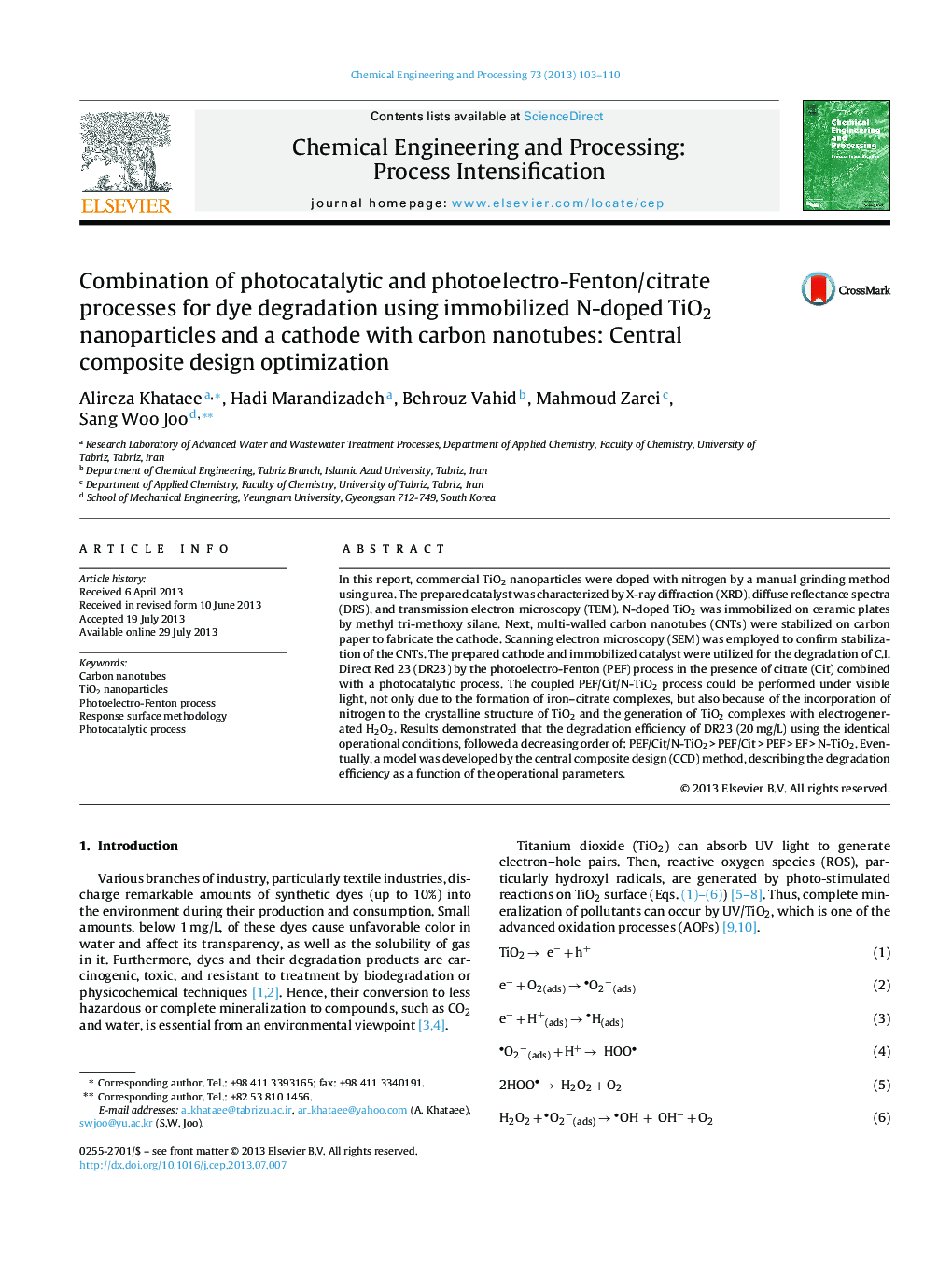| Article ID | Journal | Published Year | Pages | File Type |
|---|---|---|---|---|
| 687082 | Chemical Engineering and Processing: Process Intensification | 2013 | 8 Pages |
Abstract
In this report, commercial TiO2 nanoparticles were doped with nitrogen by a manual grinding method using urea. The prepared catalyst was characterized by X-ray diffraction (XRD), diffuse reflectance spectra (DRS), and transmission electron microscopy (TEM). N-doped TiO2 was immobilized on ceramic plates by methyl tri-methoxy silane. Next, multi-walled carbon nanotubes (CNTs) were stabilized on carbon paper to fabricate the cathode. Scanning electron microscopy (SEM) was employed to confirm stabilization of the CNTs. The prepared cathode and immobilized catalyst were utilized for the degradation of C.I. Direct Red 23 (DR23) by the photoelectro-Fenton (PEF) process in the presence of citrate (Cit) combined with a photocatalytic process. The coupled PEF/Cit/N-TiO2 process could be performed under visible light, not only due to the formation of iron-citrate complexes, but also because of the incorporation of nitrogen to the crystalline structure of TiO2 and the generation of TiO2 complexes with electrogenerated H2O2. Results demonstrated that the degradation efficiency of DR23 (20 mg/L) using the identical operational conditions, followed a decreasing order of: PEF/Cit/N-TiO2 > PEF/Cit > PEF > EF > N-TiO2. Eventually, a model was developed by the central composite design (CCD) method, describing the degradation efficiency as a function of the operational parameters.
Keywords
Related Topics
Physical Sciences and Engineering
Chemical Engineering
Process Chemistry and Technology
Authors
Alireza Khataee, Hadi Marandizadeh, Behrouz Vahid, Mahmoud Zarei, Sang Woo Joo,
